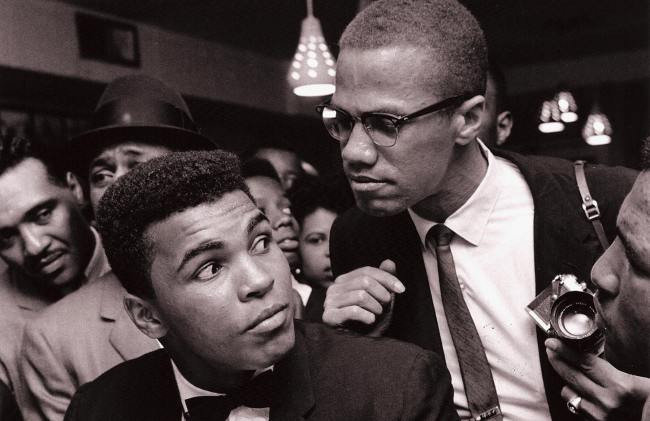“Just as the slavemaster of that day used Tom, the house Negro, to keep the field Negroes in check, the same old slavemaster today has Negroes who are nothing but modern Uncle Toms, 20th century Uncle Toms, to keep you and me in check, keep us under control, keep us passive and peaceful and nonviolent”
Today is the fiftieth anniversary of one of Malcolm X’s most quoted speeches, capturing many of the facets that make him a central figure in death just as he was in life. With his words Malcolm creates an intimate atmosphere, maintains a sense of humor while utilizing a radical and uncompromising tone to build an all-encompassing criticism. Clearly the content resonates with audiences today just as much as yesterday with the familiar unaddressed themes of class, injustice and war. Malcolm X delivered ‘Message to the Grassroots’ at Northern Negro Grass Roots Leadership Conference on 10th November 1963 at King Solomon’s Baptist Church in Detroit, Michigan.
“We have a common oppressor, a common exploiter, and a common discriminator. But once we all realize that we have this common enemy, then we unite on the basis of what we have in common”
The speech begins with a call for unity but this is not a demand for uniformity, an aspect made clear through the fact that this was Malcolm’s last speech before leaving the Nation of Islam. Rather the call for unity is a strategy to promote a consciousness that has been denied amongst a people dispossessed and to investigate diverse cultural and intellectual traditions in order to build from these strengths. Malcolm highlights the relevancy of the Bandung Conference where non-Western countries met to discuss their concerns without the overbearing gaze to the imperial nations; making it clear that people need to set their own agendas rather than simply reacting to a static political system. The need to set our own terms is a conundrum that remains significant to contemporary activists and alternative media outlets. The power of the grassroots is not in seeking to be a part of a bankrupt and corrupt political system but using creative abilities to organize themselves.
“If violence is wrong in America, violence is wrong abroad”
We might actually invert this quote as being ‘if violence is right abroad than violence is right in America’ thereby capturing a trajectory of Malcolm’s ‘by any means necessary’ stance that continued to develop until his death. While there is always a need for contextualization Malcolm uses a discussion of revolutionary movements around the globe to reveal how black people in America are being contained by fighting imperial wars abroad and by being compromised by civil rights leadership. In doing so Malcolm highlights the importance of land in revolutions, although not his intention he perhaps exposes a fissure of impotence to the revolutionary spirit of today; what skills can massive urban populations rely on in the event of a revolution and what can they hope to gain from a revolution when they a reliant upon the safety of the city? Getting back to Malcolm’s words, the house negro/field negro dichotomy is used to launch into a criticism of other civil rights leaders as well as wider class conflict, Cornell West is utilizing the same rhetoric to expose almost identical inconsistencies today in Obama and others. Indeed both note how civil rights leaders contain and co-opt the demands for change of people. Some of the most interesting details emerge when Malcolm explains how the March on Washington came about and how President Kennedy drafted in Martin Luther King Jr and the rest of the ‘big six’ to contain and co-opt the discontent of black Americans. Peter Gelderloos makes the same point about the failure of non-violence.
“If you think I’m telling you wrong, you bring me Martin Luther King and A. Philip Randolph and James Farmer and those other three, and see if they’ll deny it over a microphone”
While many of the differences between 1963 and 2013 are clear from the language the contrast that stands out in my mind is something that is easily missed or taken for granted; audience and location. One of basic fundamentals of this speech is not the content but the audience and location. In contrast to today, Malcolm is not speaking to some abstract ‘grassroots’ over the Internet or to those in the luxury of a university but to some of those most affected by inequality. It is a well-defined audience that does not have to go to him on his terms – he goes to them and meets them on their terms.
Peace…
